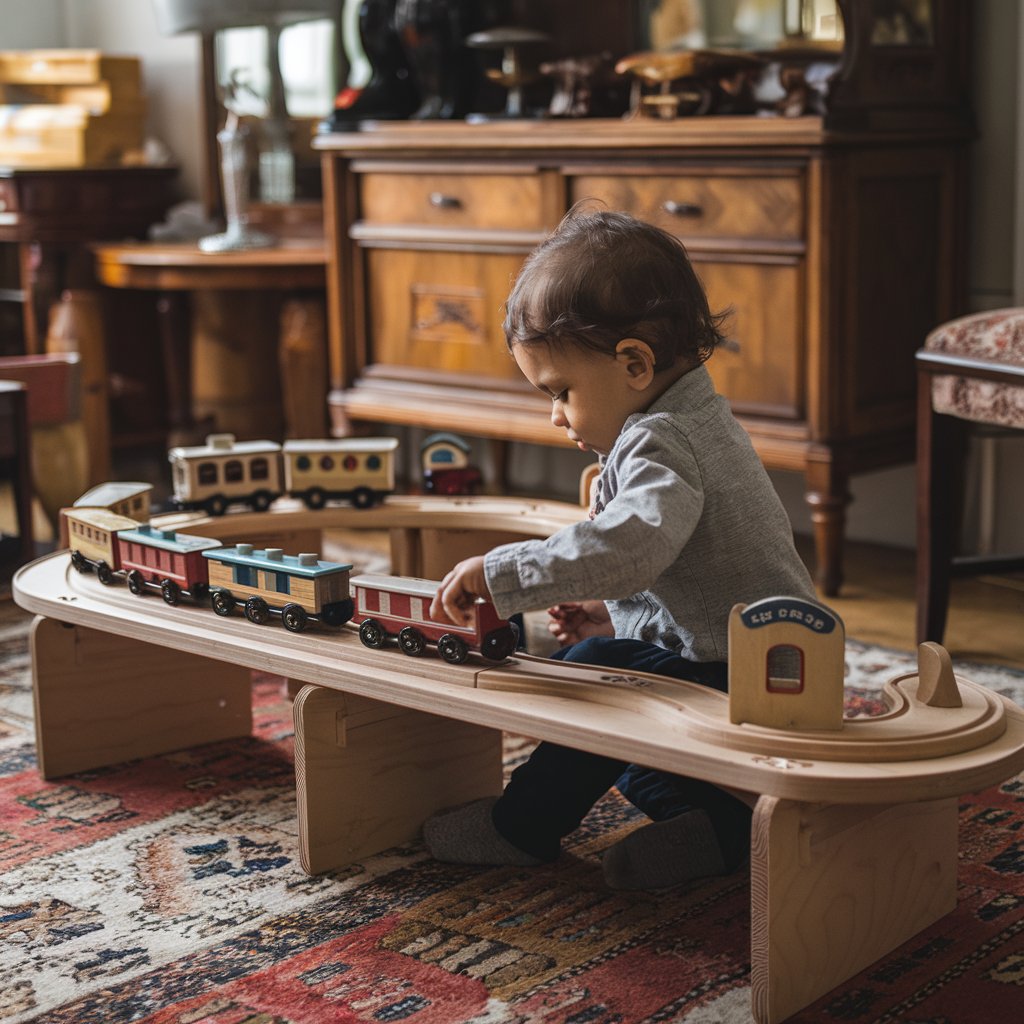How to Choose Quality Wooden Toys for Your ChildChoosing toys for your children can be a challenging task. We want something that not only entertains them but is also safe, durable, and, of course, contributes to their development. Wooden toys stand out in this regard, offering a charming and sustainable alternative to plastic toys. But how can you ensure you’re picking quality wooden toys for your child? Let’s explore the key factors to consider for making a great choice.

1. Safety Certifications
Safety is undoubtedly the top priority when it comes to children’s toys. When choosing wooden toys, look for certifications that guarantee the product has undergone rigorous safety testing. One of the most recognized certifications is the CE mark, indicating that the toy meets European safety standards. In the U.S., the ASTM seal is also an indicator that the toy is safe for children.
Additionally, pay attention to the use of paints and finishes. High-quality wooden toys are typically painted with water-based, non-toxic paints that are free from harmful substances like lead and other dangerous chemicals. This is especially crucial for younger children, who often put toys in their mouths.
2. Natural and Sustainable Materials
Not all wooden toys are made the same. When making your choice, opt for toys made from solid wood rather than MDF or plywood, which may contain glues and chemicals. Solid wood is naturally more durable and long-lasting, and it’s also more environmentally friendly.
Another important factor is to check if the wood used comes from sustainable sources. Look for toys that carry certifications like FSC (Forest Stewardship Council), which ensures that the wood was harvested from responsibly managed forests. This way, you’re not only ensuring the toy’s quality but also making a conscious choice for the planet’s future.
3. Durability: A Worthwhile Investment
One of the biggest advantages of wooden toys is their durability. While many plastic toys break easily, wooden ones can stand the test of time—and the roughest of play sessions! When choosing quality wooden toys, check if they are sturdy and well-finished, with no sharp edges or splinters.
High-quality wooden toys can last for years, being passed down from one child to another, or even from generation to generation. This makes them an excellent investment, both from a financial and ecological perspective.
4. Age-Appropriate Toys
When choosing wooden toys, it’s important to consider your child’s age. Each stage of a child’s development requires different types of stimulation, and the right toy can make a big difference in learning and motor skills.
For babies, large, colorful blocks are great for sensory development and hand-eye coordination. For older children, toys that involve building or problem-solving, such as puzzles and stacking games, are excellent for encouraging logical thinking.
Be sure to read the manufacturer’s recommendations regarding the appropriate age for the toy. This ensures that the toy will not only be fun but also safe and suitable for your child’s development stage.
5. Educational and Stimulating Toys
Quality wooden toys go beyond fun: they can be excellent educational tools. Many of these toys are designed to stimulate children’s creativity, critical thinking, and motor skills. From building blocks to stacking and sorting toys, the learning possibilities are vast.
Additionally, simple wooden toys often encourage more open-ended and imaginative play. Unlike electronic toys that can limit creativity, wooden toys allow children to create their own stories and solutions. This not only boosts creativity but also helps develop autonomy and confidence.
6. Aesthetic Appeal and Natural Feel
Last but not least, the aesthetic of wooden toys is something many families appreciate. With their soft colors and natural look, these toys are visually pleasing and can even serve as a decorative piece in a child’s room.
Moreover, the texture and feel of wooden toys provide a different sensory experience for children, encouraging them to engage with natural materials. They connect to nature in a direct way, even while playing indoors.
To buy a quality wooden toy, click this link
Conclusion
Choosing quality wooden toys for your child doesn’t have to be difficult. By paying attention to factors such as safety certifications, the choice of sustainable materials, durability, age-appropriateness, and educational value, you’ll ensure that your child has toys that are safe, fun, and beneficial for their development.
Additionally, by opting for wooden toys, you’re making a choice that’s good for both your child and the environment. These toys are a durable, eco-friendly alternative that can provide years of enjoyment and learning.
